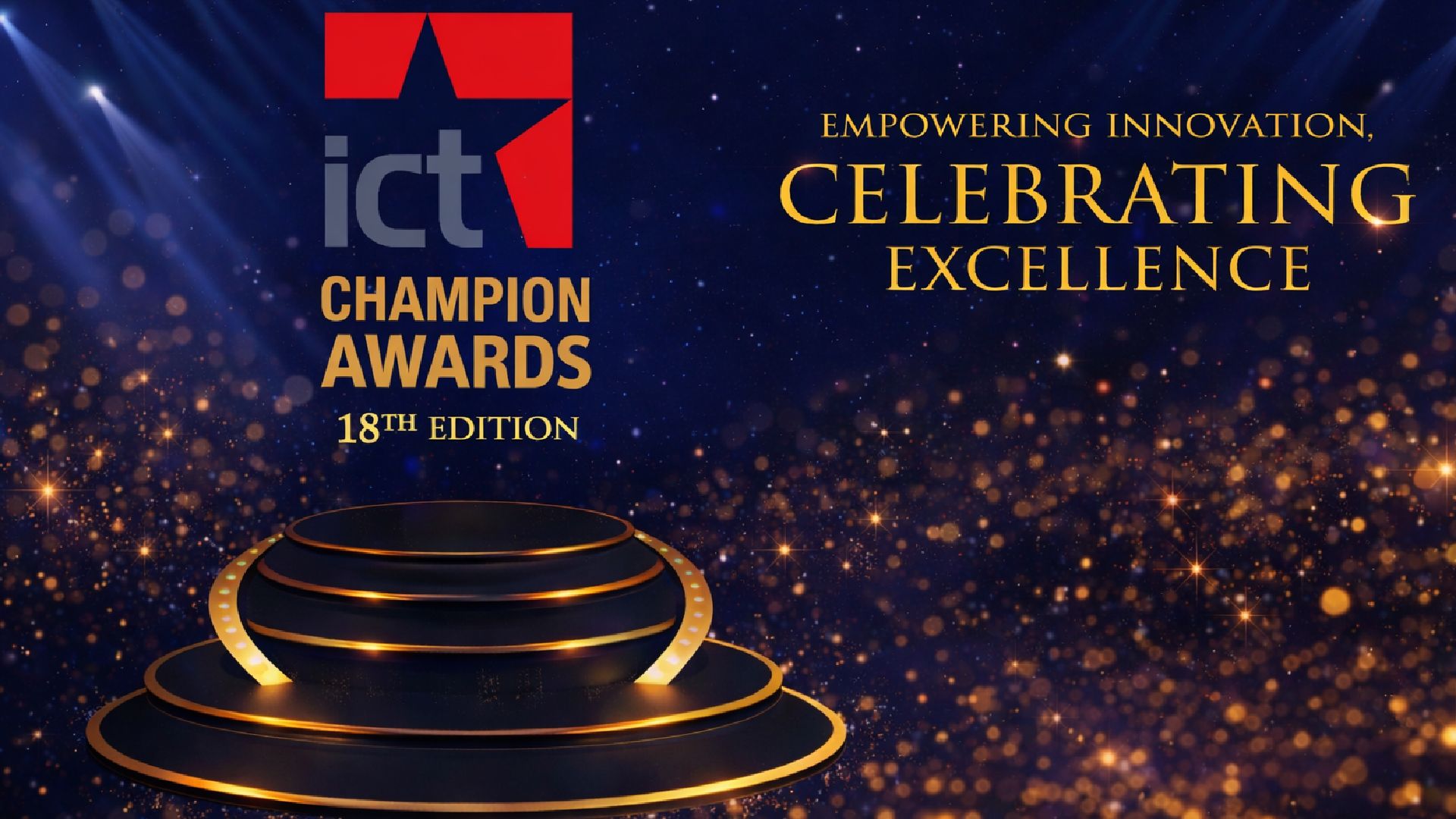Cover Story
AANI and JAYWAN: The UAE’s Bold Leap Towards a ‘Less Cash’ Payment Ecosystem

An Exclusive Interview with Andrew McCormack, COO of Al Etihad Payments
With over two decades of expertise in the financial services sector, Andrew McCormack is a seasoned payments executive currently serving as the Chief Operating Officer at Al Etihad Payments, UAE’s national payment system operator.
Could you briefly share your journey that led to your role as COO of Al Etihad Payments?
My journey into the payments industry has been quite diverse and unexpected. Initially, I began my career as a software engineer in the aerospace industry, where I spent nearly a decade honing my technical skills. After completing my MBA, I sought to broaden my horizons into business management and found myself leading a solar energy company in Canada. This role was invaluable in teaching me how to build and scale a small business.
It was during this time that my interest in financial services began to grow, particularly as I took on responsibilities for the company’s payments and financial operations. This newfound interest led me into the banking sector, then into insurance, and eventually into the payments industry.
I joined Payments Canada and ultimately became the CIO, where I oversaw the technology and payment services. Later, I had the opportunity to relocate to Singapore to establish an office for the Bank for International Settlements, an experience that was both challenging and rewarding, especially in the wake of the COVID-19 pandemic.
Currently, I have the privilege of serving as the COO at Al Etihad Payments, where I am leveraging my diverse experiences to build and transform the company into a leading national payment infrastructure provider.
Al Etihad Payments was established by the Central Bank of the UAE in 2023. What were the key motivations behind its creation, and how does AEP align with the UAE’s broader objectives for advancing the digital economy?
In many countries, the central bank doesn’t directly operate retail payment systems. Instead, they often rely on an operating entity to provide those retail-facing services for a variety of reasons. However, the central bank typically prefers to maintain an oversight role over the retail payment schemes and systems, and in this country, that is precisely how Al Etihad Payments came into existence.
The Central Bank decided to divest several functions, such as the UAEWPS and the UAESWITCH, the card switch that we manage. In addition, we have been tasked with enhancing these services with new offerings, such as AANI Instant Payments and others we will discuss later. This approach makes sense from an operational perspective, as a central bank in most countries acts more as a supervisor than an operator, and we have implemented this model here in the UAE.
The company was established last year, and we are in the process of scaling up, taking over the operational responsibilities for UAEWPS and the UAESWITCH. We launched the AANI Instant Payment service in late 2023 and will be launching a national card scheme in the not-too-distant future.
Could you share how AANI is driving innovation in the instant payments landscape and the progress you have made in expanding its reach?
AANI is the platform for innovation in instant payments, offering 24/7 real-time payment experiences and enabling a range of overlay services.
For example, users can simply send money using a mobile phone number, scan a QR code at a merchant checkout, or use it in an online e-commerce setting. AANI facilitates this level of digital innovation, supporting interbank payments, transactions between banks and wallet providers, and all other possible combinations.
All participants in the AANI system are licensed institutions, which includes banks, payment service providers, digital wallets, and exchange houses. We serve as the glue that connects these systems, offering a platform for innovation that participants can leverage to serve their customers and merchants.
Additionally, we have the AANI Mobile app, available in all major app stores. However, the reach of AANI payments extends beyond our app. The goal is for AANI services to be ubiquitous. We currently have around 30 participants, including banks and exchange houses, connected to the platform, and we expect to reach at least 50 by the end of the year. This means that the vast majority of the market will be connected, and AANI services will be available not just through our app, but through the apps of all these financial channels.
As a customer of a participating bank, you won’t even need to download our app to use AANI payment services—they will be natively available within your bank’s app or digital wallet. By the end of the year, we expect to have at least 95% of the market connected.
Could you provide some insight into how AANI plans to handle cross-border payments and integrate these services?
AANI’s initial focus is on the domestic payments side, such as person-to-person and person-to-merchant transactions using QR codes or mobile phone numbers— the use cases I previously described. Our priority is to scale the platform, connect all the banks and licensed participants, and have them enroll their customers. This step is crucial as it requires obtaining the customer’s consent to activate these services, and we also need to onboard all the merchants.
We want people to recognize AANI and see QR codes at checkout, providing them with the option to pay using this payment method. Our initial push is domestic, but as you mentioned, there are other countries implementing similar services. We do aspire to find ways to connect with them, so extending our platform from a domestic to a cross-border perspective is certainly on our roadmap.
Jaywan, the domestic card scheme, is a significant initiative. How will Jaywan improve the UAE’s payment infrastructure and cost structure?
Jaywan is the forthcoming national domestic card scheme. The name reflects the country’s heritage, as “Jaywan” translates to “precious pearl,” symbolizing the UAE’s rich culture and history. While domestic card schemes are not new—Canada’s Interac and Saudi Arabia’s Mada are established examples—the introduction of Jaywan is a significant step for the UAE. It represents a locally developed solution tailored for the UAE, ensuring secure and reliable transactions across various use cases, including point-of-sale and e-commerce.
Having a domestic card scheme provides several benefits, including enhancing resilience by giving the country control over its payment infrastructure. It also has the potential to reduce costs, as card payment fees for merchants can be quite high. One of the key objectives is to manage and control the cost structure of accepting digital and card payments within the UAE. Furthermore, Jaywan aims to ensure interoperability, not just within the UAE but also beyond its borders.
What are the key priorities for the launch of Jaywan, and how are you ensuring its success?
From a launch perspective, our current priority is acquiring. To simplify, it is crucial that once a bank issues a Jaywan card, it must work seamlessly wherever needed. For instance, when a customer uses the card in a shop, it should function properly from day one.
Our focus is on ensuring that the card works at ATMs, point-of-sale terminals, and supports various methods like tap, chip, and pin. E-commerce is another critical area, as it is more complex than point-of-sale. We need Jaywan to be accepted across a wide range of online retailers.
Additionally, we are working to onboard the initial group of issuers as soon as possible. We have a growing pipeline of issuers interested in developing their card products. While it’s challenging to provide an exact launch date, rest assured that all these components are progressing, and we are dedicated to ensuring a successful launch.
How does Al Etihad Payments support financial institutions, and what role do you play in assisting SMEs and retail customers?
Al Etihad Payments operates as a wholesaler, focusing on working with financial institutions rather than having direct relationships with SMEs or retail customers. Our support is channeled through our banking partners. We ensure that our partner banks are well-informed and equipped with the necessary information and documentation to assist their customers effectively.
While we do not engage directly in training or support for end users, such as small and medium-sized businesses, we provide the resources and support needed by our banking partners. These partners then assist their clients in integrating our services into their ERP systems, point-of-sale systems, and other applications. In summary, our role is to facilitate through our financial institution partners rather than engaging directly with end users.
How do the banking community and other financial entities perceive AANI compared to traditional credit and debit card usage?
We have received an overwhelmingly positive response from the banking community, as well as from digital wallets, payment service providers, and exchange houses. These participants are enthusiastic about joining and contributing to the initiative. While the attractive cost structure is a significant factor, the real value lies in the innovation this platform enables.
The platform allows participants to offer services that genuinely delight their customers. For instance, sending money to family members, splitting bills at restaurants, or other everyday transactions become extremely easy and cost-effective.
Industry response has been very encouraging. Although integrating these services requires a substantial technical effort from participants, we are making significant progress. We began last year with 10 participants and expect to exceed 50 by the end of this year. Nearly 1,000,000 end users are already enrolled, and our focus is now on enhancing merchant and e-commerce experiences.
In the next one to two years, we anticipate substantial innovation in the commercial space, with new and creative ways to seamlessly integrate payments into various customer journeys. This central platform supports industry-driven innovation, allowing us to facilitate rather than lead the development.
In your view, how soon could the UAE transition to becoming a 100 percent cashless economy, and what are the key steps required to achieve this goal?
The concept of becoming cashless is quite complex and nuanced. We prefer to think in terms of “less cash” rather than entirely cashless. Cash possesses unique attributes that are challenging to replicate in the digital world. For example, in a worst-case scenario where the power goes out, cash still functions, highlighting why it’s not practical to eliminate it from the economy.
Cash is widely used, universally accepted, and familiar to people, which are all valuable traits. Our goal is not to eliminate cash but to enhance our payment infrastructure by promoting more acceptance and usage of cost-effective digital payment methods. Over time, these methods may reduce cash usage in significant ways, but the objective is not to completely remove cash from the ecosystem.
Automotive
Goodyear continues support for Team De Rooy in the 2025 Dakar Rally

Goodyear continues its partnership with Team De Rooy for the upcoming Dakar Rally 2025. As the official tire supplier, Goodyear will equip the Dutch team with its high-performance Goodyear OFFROAD tires and advanced Tire Pressure Monitoring System (TPMS), helping to ensure reliable performance throughout the rally’s demanding stages. This collaboration highlights Goodyear’s dedication to truck motorsport, combining innovation with proven durability on some of the world’s toughest terrains.
Dakar 2025: new challenges await
The 2025 Dakar Rally, running from January 3 to January 17, will cover nearly 8,000 kilometers, including over 5,000 kilometers of competitive stages, starting in Bisha and finishing in Shubaytah. This edition ramps up the difficulty, featuring an early 48-hour chrono stage that flows into the marathon stage, setting a challenging pace from the outset. In the second week, competitors will tackle the demanding dunes of the Empty Quarter, with over 45% of the course on separate tracks for different vehicle classes, enhancing safety while complicating navigation.
Goodyear OFFROAD tires and TPMS: performance in challenging conditions
Team De Rooy relies on Goodyear OFFROAD tires for their durability and reliable traction across different conditions. Designed to handle heat and challenging surfaces, these tires help reduce heat buildup at high speeds and provide consistent performance on sand, rocks, and steep slopes.
Goodyear’s TPMS offers real-time monitoring of tire pressure and temperature, helping the team make quick adjustments and avoid potential issues. This advanced system helps to minimize downtime and supports better strategic decisions—crucial for maintaining momentum during the rally.
A Legacy of motorsport excellence
Goodyear’s continued support of Team De Rooy highlights its long-standing commitment to truck motorsport. As the title sponsor of the Goodyear FIA European Truck Racing Championship (ETRC), Goodyear uses motorsport as a proving ground for tire technology advancements. The partnership with Team De Rooy reflects this commitment, driving innovation and performance in demanding environments.
Maciej Szymański, Marketing Director Commercial EMEA at Goodyear, commented:
“Our continued collaboration with Team De Rooy for Dakar 2025 underscores our commitment to supporting motorsport teams in extreme conditions. With Goodyear OFFROAD tires and TPMS, we aim to provide the reliability needed to tackle the rally’s challenges. We wish Team De Rooy all the best and look forward to another exciting competition at this iconic rally”.

Cover Story
PLAUD Note Pro: This Tiny AI Recorder Might Be the Smartest Life Upgrade You Make!

By Srijith KN
I’ve been using the Plaud Note Pro for over three months now, and this is a device that has quietly earned a permanent place in my daily life now. Let me walk you through what it does—and why I say that so?
Well at first I thought this wasn’t going to do much with my life, and by the looks of it Plaud Note Pro looks like a tiny, card-sized gadget—minimal, unobtrusive to carry it around.
With a single press of the top button, it starts recording meetings, classes, interviews, or discussions. Once you end your session, the audio is seamlessly transferred to the Plaud app on your phone, where it’s transformed into structured outputs—summaries, action lists, mind maps, and more.

In essence, it’s a capture device that takes care of one part of your work so you can concentrate on the bigger game.
Design-wise, the device feels premium, it features a small display that shows battery level, recording status, and transfer progress—just enough information without distraction. The ripple-textured finish looks elegant and feels solid, paired with a clean, responsive button. It also comes with a magnetic case that snaps securely onto the back of your phone, sitting flush and tight, making it easy to carry around without thinking twice.
Battery life is another standout. On a full charge, the Plaud Note Pro can last up to 60 days, even with frequent, long recording sessions. Charging anxiety simply doesn’t exist here.
Well, my impressions about the device changed once I had an audio captured. I tested this in a busy press conference setting—eight to ten journalists around me, multiple voices, ambient noise—and the recording came out sharp and clear. Thanks to its four-microphone array, it captures voices clearly from up to four to five meters away, isolating speech with precision and keeping voices naturally forward. This directly translates into cleaner transcripts. It supports 120 languages, and yes, I even tested transcription into Malayalam—it worked remarkably well, condensed the entire convo-interview that I had during an automotive racing show that I was into.
Real meetings or interviews are rarely happens in a neat environment, and that’s where I found the Plaud Note Pro working for me. It captures nuances and details I often miss in the moment. As a journalist, that’s invaluable. The app also allows you to add photos during recordings, enriching your notes with context and visuals.
I tested transferring files over 20 minutes long, and the process was smooth and quick. Accessing the recordings on my PC via the browser was equally intuitive—everything is easy to navigate and well laid out.

Now to what is inside this tiny recorder. Well, the core of the experience is Plaud Intelligence, the AI engine powering all Plaud note-takers. It dynamically routes tasks across OpenAI, Anthropic, and Google’s latest LLMs to deliver professional-grade results. With over 3,000 templates, AI Suggestions, and features like Ask Plaud, the system turns raw conversations into organized, searchable, and actionable insights. These capabilities are available across the Plaud App (iOS and Android) and Plaud Web.
Privacy is what I happen to see them look at seriously. All data is protected under strict compliance standards, including SOC 2, HIPAA, GDPR, and EN18031, ensuring enterprise-grade security.
What makes the AI experience truly effective is the quality of input. Unlike a phone recorder—where notifications, distractions, and inconsistent mic pickup interfere—the Plaud Note Pro does one job and does it exceptionally well. It records cleanly, consistently, and without interruption, delivering what is easily one of the smoothest recording and transcription experiences I’ve used so far.
I’m genuinely curious to see how Plaud evolves this product further. If this is where they are today, the next version should be very interesting indeed.
“The Plaud Note Pro isn’t just a recorder; it’s a pocket-sized thinking partner that captures the details so you can think bigger, clearer, and faster.”
- Plaud Note Pro is now available for pre-order at https://uae.plaud.ai/pages/plaud-note-pro
- Plaud Note and NotePin are available at https://uae.plaud.ai
Cover Story
ICT CHAMPION AWARDS – 18TH EDITION

The ICT Champion Awards return with their 18th edition, continuing a long-standing tradition of recognising excellence across the Middle East’s ICT landscape. The awards bring together industry leaders, technology innovators, and decision-makers for an evening dedicated to celebrating impact, leadership, and progress across the region’s digital ecosystem.
ABOUT ICT CHAMPIONS AWARDS
This programme is designed to highlight and honour exceptional achievements across the Middle East’s ICT ecosystem, celebrating organisations that continue to demonstrate excellence in innovation, growth, resilience, and leadership. The ICT Champion Awards aim to inspire progress while recognising sustained contributions that have shaped the region’s technology landscape over time.
Integrator Media proudly presents the ICT Champion Awards – 18th Edition, recognising distinguished technology organisations across enterprise solutions, critical and public infrastructure, cybersecurity, and digital transformation. More than an awards platform, the ICT Champion Awards represent a long-standing commitment to acknowledging industry leadership and real-world impact. The programme serves as a trusted stage to honour innovation, reliability, and the organisations addressing the evolving demands of today’s interconnected and security-driven digital environment.
AIM OF ICT CHAMPIONS AWARD
HONOR INNOVATION: Mark major milestones in the Middle East in the technology domain.
BENCHMARK SUCCESS: Highlight significant technology innovations and achievements in the Middle East landscape.
ACKNOWLEDGE KEY CONTRIBUTIONS: Honor and value key contributions made by leading technology organizations in the Middle East.
AWARD EXCELLENCE: Acknowledge and award accomplishments made by organizations to address the increasing demand in the technology domain.
PROMOTE COMMUNITY ENGAGEMENT: Establish a platform for the technology community to unite, celebrate successes, and inspire future accomplishments.
WHY SHOULD YOU PARTICIPATE?
STATEGIC NETWORKING: Connect with top experts and decision-makers in the ICT industry. This is your chance to build valuable relationships and expand your professional network.
MAXIMUM EXPOSURE: Aligned with INTERSEC 2026, the event ensure unparalleled exposure as the entire ICT community gathers in one place. Your brand will be in the spotlight, drawing high impact from the audience that are aligned with security, technology, and enterprise transformation industry.
CHANNEL & PARTNER ENGAGEMENT: Promote your brand directly to prospective partners and clients. This platform provides a unique opportunity to discuss your offerings and build new connections.
BRAND AMPLIFICATION: Participate and leverage multi-level branding opportunities through our extensive print, digital, and social media coverage.
HIGH-PROFILE BRANDING: Gain high-profile branding before, during, and after the event across multiple mediums, including print and online platforms.
EVENT DETAILS:
- Date: 28th January 2026
- Venue: Shangri – La Dubai Hotel, Al Nojoom Ballroom, Sheikh Zayed Road, Dubai. (nearest landmark: Near Financial Metro Station)
- Time: 6:00 PM – 10:30 PM
- Map Location: HERE
- Event Registration Link: HERE
- Event Agenda: HERE
AWARD NIGHT HIGHLIGHTS
-

 Tech News1 year ago
Tech News1 year agoDenodo Bolsters Executive Team by Hiring Christophe Culine as its Chief Revenue Officer
-

 VAR9 months ago
VAR9 months agoMicrosoft Launches New Surface Copilot+ PCs for Business
-

 Tech Interviews2 years ago
Tech Interviews2 years agoNavigating the Cybersecurity Landscape in Hybrid Work Environments
-

 Tech News6 months ago
Tech News6 months agoNothing Launches flagship Nothing Phone (3) and Headphone (1) in theme with the Iconic Museum of the Future in Dubai
-

 Tech News2 years ago
Tech News2 years agoBrighton College Abu Dhabi and Brighton College Al Ain Donate 954 IT Devices in Support of ‘Donate Your Own Device’ Campaign
-

 VAR1 year ago
VAR1 year agoSamsung Galaxy Z Fold6 vs Google Pixel 9 Pro Fold: Clash Of The Folding Phenoms
-

 Editorial1 year ago
Editorial1 year agoCelebrating UAE National Day: A Legacy of Leadership and Technological Innovation
-

 Tech Features11 months ago
Tech Features11 months ago5 Urgent Questions About Healthcare Network Cybersecurity in the Middle East
























